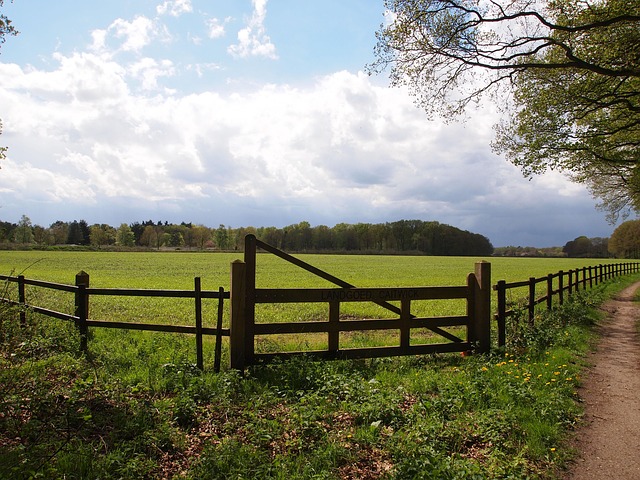In the quest for securing vast properties without breaking the bank, cost-effective fencing solutions have emerged as a practical and desirable option. This article delves into the unique challenges and opportunities presented by large-scale fencing projects. We explore strategies to balance durability and affordability through an analysis of modern fence materials and innovative design approaches. Additionally, practical installation tips ensure long-lasting results while adhering to budget constraints, offering a comprehensive guide for property owners seeking secure and cost-efficient solutions.
- Understanding Cost-Effective Fencing Needs for Large Properties
- Exploring Durable and Low-Cost Fence Materials
- Design Strategies to Maximize Cost Savings and Functionality
- Installation Tips for Long-Lasting and Budget-Friendly Fences
Understanding Cost-Effective Fencing Needs for Large Properties
Large properties present unique challenges when it comes to fencing. While aesthetic considerations are important, functionality and durability take center stage due to the vast areas involved. Cost-effective fencing solutions for large properties must balance these factors to provide both visual appeal and practical benefits.
Property owners should consider not only the initial installation cost but also ongoing maintenance expenses. Long-lasting materials that can withstand harsh weather conditions and potential wildlife damage are essential. Additionally, efficient designs that minimize material waste contribute to both sustainability and budget-friendliness.
Exploring Durable and Low-Cost Fence Materials
When it comes to fencing large properties, cost-effectiveness is a top priority for many homeowners. Exploring durable yet low-cost fence materials offers a practical solution without compromising quality or longevity. Options like vinyl and wood are popular choices due to their affordability and relatively easy installation. Vinyl fences, in particular, have gained popularity for their low maintenance requirements and resistance to rot and rust, making them an excellent long-term investment.
Additionally, modern fencing technologies introduce innovative materials that combine strength and aesthetics at competitive prices. Composite fencing, for instance, combines wood fibers and plastic to create a durable, weather-resistant barrier that mimics the look of traditional wood fences. These advanced materials not only reduce labor costs but also stand the test of time, ensuring your property remains secure and well-defined without breaking the bank.
Design Strategies to Maximize Cost Savings and Functionality
When designing fencing solutions for large properties, strategic planning can significantly maximize cost savings while enhancing functionality. One effective approach is to opt for scalable and modular fence designs that allow for future adjustments or expansions. This reduces the need for complete replacements and ensures the longevity of your investment. Additionally, using locally sourced materials or recycled products can lower construction costs without compromising quality.
Incorporating functional elements like gates, security cameras, or automated entry systems into the fencing design not only adds value but also contributes to cost savings in the long run. These features provide enhanced security and accessibility, making your property more versatile. By combining aesthetic appeal with practical considerations, you can create a fencing system that not only complements your large property but also offers optimal functionality at a reduced cost.
Installation Tips for Long-Lasting and Budget-Friendly Fences
When installing a fence for your large property, prioritizing durability and cost-effectiveness is essential. One tip to ensure long-lasting results is to choose materials that can withstand the elements. Opt for high-quality, weather-resistant options like vinyl or treated wood, which require minimal maintenance compared to uncoated metal or low-grade timber. Proper planning is key; measure your property accurately to get the right amount of material, reducing waste and saving money.
Before beginning installation, prepare the ground by removing any obstructions and leveling it. Ensure posts are set in concrete for stability, especially in exposed areas. Regularly inspect your fence throughout its life, repairing or replacing damaged sections promptly. Regular cleaning and treatment with suitable preservatives will also contribute to maintaining its integrity, keeping maintenance costs low.
